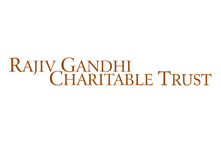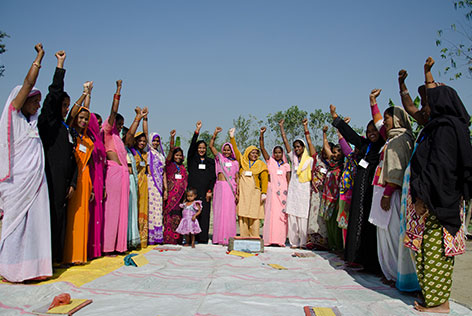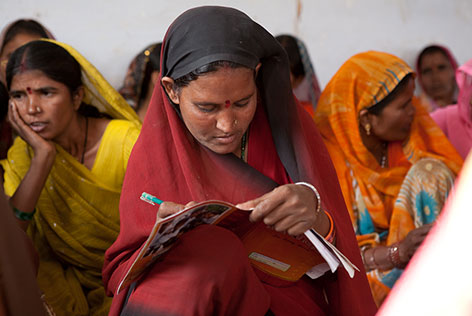
RGMVP strives towards a holistic empowerment for those in poverty. It looks beyond financial inclusion; it empowers women across all sectors and provides them a platform where the tangible and intangible causes of poverty are addressed to break the cycle of marginalisation.
Rajiv Gandhi Mahila Vikas Pariyojana (RGMVP), the Trust's flagship poverty mitigation and women's empowerment programme, reaches out to over millions of disenfranchised households in the state of Uttar Pradesh (UP). Outreach has also been initiated in Mewat, one of the poorest districts of Haryana.
RGMVP's goal is to organise women to harness their individual and collective potentials as change agents, enabling them to facilitate poverty reduction by disrupting hierarchy and changing age-old power relations. Its bottom-up approach is based on building a three-tier community-led structure of women's institutions, with the Self Help Group (SHG) as the primary unit. A SHG typically consist of 10-20 poor women, from similar socio-economic backgrounds. All SHGs mobilised at the village level federate into Village Organisations (VOs), representing 150 to 250 poor families drawn from 10 to 20 SHGs. The VOs in turn federate into Block Organisations (BOs), representing 5,000- 7,000 women.

The institutional platform or pipeline (SHGs, VOs and BOs) supports capacity-building and development of social capital, enables the poor to address social and economic issues collectively, and delivers a range of services that result in their social and economic empowerment. RGMVP's key innovation is the dual creation of this self-sustaining community institution pipeline and Community Resource Persons (CRPs) that serve to deliver various development interventions to the most isolated women. The pipeline forms the foundation for collective action around community issues, sharing of best practices, and is an efficient cost-effective way to disseminate training across sectors - financial, health, political, and social.
Thus, RGMVP strives towards a holistic empowerment for those in poverty. It looks beyond financial inclusion; it empowers women across these sectors and provides them a platform where the tangible and intangible causes of poverty are addressed to break the cycle of marginalisation.

RGMVP intervenes in districts that have the poorest human development indices such as low female literacy, high concentrations of Scheduled Caste (SC)/Scheduled Tribe (ST) households, and high maternal and neo-natal mortality. The programme focuses on building and nurturing community institutions, layering financial, health, agriculture and sanitation interventions, while nurturing community-based trainers and resource persons to continue the interventions at scale.
The community institution pipeline addresses the intrinsic human need to be part of a community by providing women with social safety nets rooted in a system of learning. This, in turn, provides the knowledge and tools necessary for constructively channelling their discontent built up from decades of subjection. As a result, women become equipped to tackle more complex socio-cultural issues, challenge traditional gender roles, and face future challenges head-on, without running the risk of being ostracised and isolated in their villages.
Over the past 15 years, RGMVP has witnessed that the spirit of volunteerism and the capacity to exercise leadership lives within each individual. The community institutions access this spirit and leadership capacity by building confidence and efficacy, connecting women to a larger purpose (which they find personally fulfilling), and providing structural support and information. The combination of these innate qualities with the collective strength of the community institution pipeline and skill development interventions yields mass social mobilisation, where communities have the will, hope, and ability to solve problems themselves. Thus, RGMVP's model is community driven, based on community-identified issues and is self-sustaining, low cost, scalable, and inclusive.